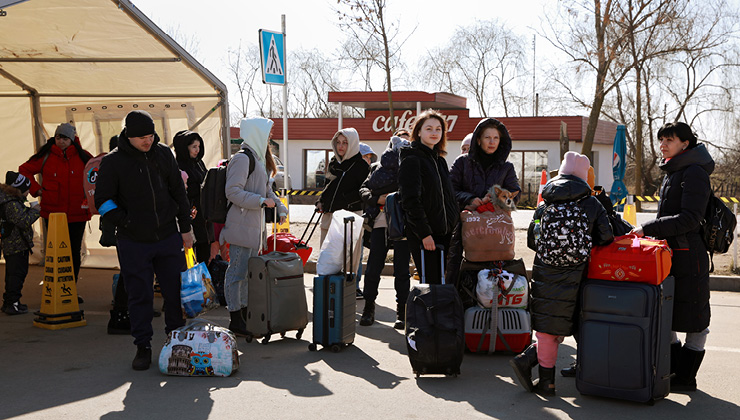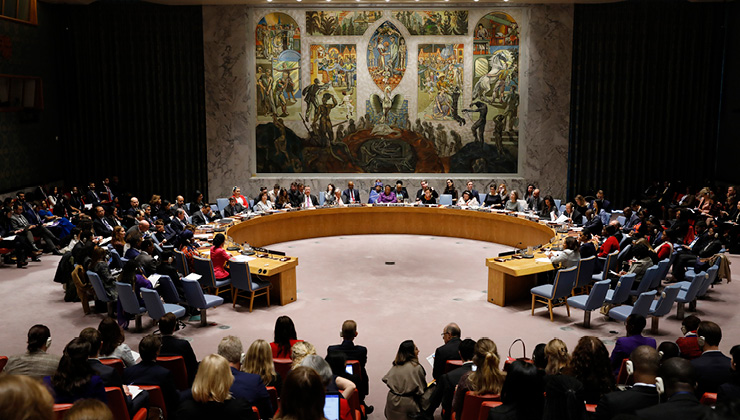Children born of war can suffer the effects of stigma long after conflict has ended, yet they have remained largely invisible in the Women, Peace and Security agenda. Joanne Neenan highlights the opportunities to address and protect this group through the UK’s new Global Principles to end stigma.
This week at the UN General Assembly, the United Kingdom launched the Principles for Global Action (“the Principles”) to prevent and address stigma associated with conflict-related sexual violence (CRSV). The Principles describe stigma as the “social scar” of CRSV, with potentially life-threatening consequences and adverse human rights implications. Framing stigma as a foreign policy concern signals an ambitious, victim/survivor centred expansion of the UK’s Preventing Sexual Violence Initiative. Importantly, the Principles also bring into purview invisible subjects of the Women, Peace and Security agenda: children born as a result of rape. This post highlights the Principles’ application to this “group” of victim/survivors and considers their launch as progress in the international recognition and protection of “children born of war”.
Global Principles address children born of rape as victim/survivors
The Principles recognise that stigmatisation of victim-survivors of CRSV may produce a range of gender-based harms, including societal rejection, physical and psychological health issues, forced marriage, employment loss and poverty. Five principles and ten recommendations, developed in consultation with survivor groups, guide international policymakers/practitioners in tackling stigma and its root causes. Children born of rape are specifically referenced as victim/survivors, building on their sporadic normative recognition as rights-holders and subjects of international concern across UN documents. One key recommendation is for states to adopt national stigma strategies containing specific programmes to support mothers and children through, civic participation and economic empowerment.
Stigma-related risks for children born of CRSV
Stigma-related risks to children born of rape referenced in the Principles include: “branding” due to perceived association with enemy fathers; inability to access citizenship rights or register for school (due to gender discriminatory laws against women) and vulnerability to sexual abuse and other violence. Women and girls who become pregnant as a result of rape also face significant risks to their physical and emotional well-being, civil, political and socio-economic rights. These include unsafe abortion, forced marriage to “legitimise” the violence and pregnancy and loss of choice as to whether to keep private their status as victim/survivors.
Children born of war(s)
The existence of children born of conflict-related sexual violence and exploitation is not new. Nor is insufficient attention to their needs and fates. Children have been born in such circumstances in countries including Colombia, Rwanda, Bangladesh, Syria, Iraq, Bosnia, Peru and Timor-Leste. Some reports document the use of rape as a potential strategy of ethnic cleansing, with the claimed goal of producing children of a “different” ethnicity. Across conflict contexts, children may face identity challenges and a range of rights-risks, due to their positioning in “post-war” societies and association with conflict. Currently, children being born in Daesh occupied territory and during Lord Resistance Army captivity in the Great Lakes region face the same risk of statelessness, despite legal protection of the right to birth registration and nationality under the UN Convention on the Rights of the Child.
Knowledge and protection gaps on children born of war
Academic research and policy data on the exact numbers, needs and vulnerabilities of children born of CRSV (as children and adults) remains incomplete. However, reports and research evidence the need for further study and action, including on stigma-related risks, and also understanding situations where stigma has been avoided and children embraced. In Northern Uganda, due to societal rejection and stigma some children born in LRA captivity face upon return, some have described war as better than peace. Some now adult victim-survivors, stigmatised as “Chetnik babies” (Bosnia) and “children of bad memories” (Rwanda) have unmet justice and socio-economic needs, due to absent or inadequate reparations.
The Principles have the potential to serve as a key tool in resurfacing the rights and needs of children and their mothers (girl-children and women), encouraging further research and offering practical guidance to reduce stigma and enhance protection.
Existing scholarship on children born of war
Scholars in the interdisciplinary research field of children born of war have long criticised the normative and practical neglect of such children in laws, policies and programmes. While the exact scope of “children born of war” is contested, it is generally considered to include children born through diverse circumstances of sexual violence or exploitation to local citizens, including those fathered by enemy soldiers, occupational or peacekeeping forces.
The Principles may help counteract two core concerns articulated in scholarly literature.
A historic critique is that efforts to criminalise and make visible the impact of CRSV upon women have resulted in children born from conflict-rape being framed primarily as harm to women, rather than independent holders of human rights which have been violated. The wording of the international crime of “forced pregnancy” has been cited as an example of this. The Principles’ specific recognition of both women and children born of rape as victim/survivors may help address this concern, by framing both as human rights-holders.
Secondly, scholars advocating for a wide definition of children born of war may welcome the broad approach to victims/survivors and CRSV adopted by the Principles. They may also serve as a tool to address stigma-related risks for children born during war to local and “foreign” parents in circumstances other than CRSV.
Bridging the academic-policy gap
On 25 September, the Centre for Women, Peace and Security is convening a workshop on Stigma and Children Born of War at which scholars engaged in research at LSE and elsewhere, policymakers and practitioners will seize the moment provided by the UK’s agenda for an exchange on key issues. Presentations and dialogue will cover topics including: the conceptualisation of “children born of war” and stigma, the role of human rights and reparations, the ethics of researching in this field, protection gaps and positive interventions to reduce stigma.
In general, the launch of the Principles offers a critical occasion for stakeholders to consider the future and greater visibility of children born of war in the WPS agenda, including National Action Plans and UN SRSG reports. Broader questions such as the appropriateness and necessity of different conceptual, legal and policy framings – including children’s rights – remain ripe for further debate.
Clearly, ethical considerations must remain paramount in confronting the dilemma of better understanding and addressing the rights and needs of children born of war, without doing harm. In particular, stakeholders must strive not to essentialise children and their fates or break any “protective silences” surrounding their origins. Despite such risks, the need for further research, legal and policy focus remains pressing. An overarching goal must be to acknowledge pregnancy induced by sexual violence and exploitation as a specifically gendered harm to girls and women, while respecting and ensuring the individuality and rights of children. The Principles’ acknowledgment and resurfacing of children born of war as victim/survivors provide a solid basis for further steps forward.
The views, thoughts and opinions expressed in this blog post are those of the author(s) only, and do not reflect LSE’s or those of the LSE Centre for Women, Peace and Security.
Image credit: Charu Chaturvedi on Unsplash





Its such an ACADEMIC paper and perspective… Only once were survivors referred to.
But I appreciate that at least, it’s a start to the disussions…
I’m an advocate of a survivor centred approaches. How would you break down the above paper to a simple semi literate survivor of rape?
I wish the launch picture wold have captured or captioned a survivor…
Thank you so much for reading and for your comment. I fully agree that a survivor-centred approach in understanding and addressing the situation of children born as a result of sexual violence and exploitation is vital.
My intention for this short blog was to highlight just a few issues relating to children born in such circumstances, from a particular and limited angle. It was also intended to start (and continue) conversations about this very important issue.
I believe that the personal voices and perspectives of survivors, given directly by survivors, are critical in ongoing discussions about children born in circumstances of sexual violence and exploitation.
The editors of the blog chose the photo to accompany the text. My understanding is that they chose a public image of the launch, having regard to privacy and security factors.